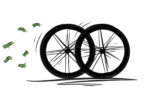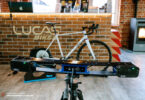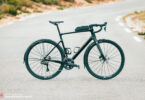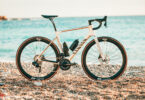SCOTT are confident enough not to send the flagship model of the Addict RC series into this comparison test, settling on the Addict RC Pro instead. No wonder, since the differences to the Addict RC Ultimate are limited. But is that enough to face up against the four fastest race bikes of the 2021 season?
Get an overview of the grouptest here: The best race bike of 2021 – 5 high-end models on test
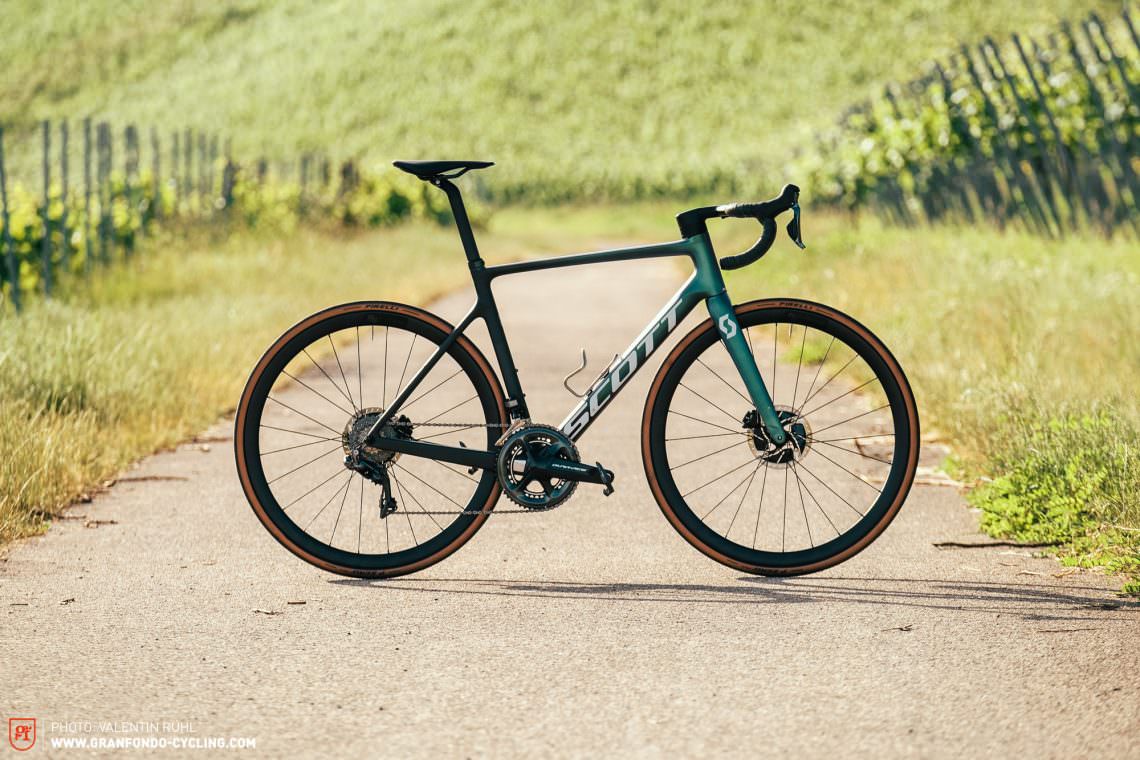
SCOTT have been racing the Addict RC in the WorldTour for years and let the wishes and experience of the pros flow directly into its development. The flagship model in particular is designed for racing. However, in this test the Swiss company didn’t deliver the Addict RC Ultimate but the RC Pro, which sits one rung down the ladder. The differences include a different carbon layup and a Shimano DURA-ACE Di2 groupset instead of SRAM RED eTap AXS. In addition, Syncros Capital 1.0 35 wheels are fitted instead of Zipp’s 303 Firecrest. Compared to the flagship build, that adds up to additional weight of just under 100 g and a saving of € 3,500. Our size L test bike weighs 6.99 kg and costs € 8,499. The electronic Shimano DURA-ACE Di2 groupset with 52/36 t chainrings and an 11–30 t cassette ensures fast and precise gear changes, with a range that matches the bike’s intended use well. However, for those who ride in very mountainous regions or aren’t at peak fitness, a compact crank (50/34 t) would be recommended. The SCOTT Addict RC Pro comes without a power meter.
If you want to lean into the corners like Valentino Rossi, the SCOTT Addict RC Pro is the bike for you: with its wide tires, it carves through open turns like no other road bike in the test.
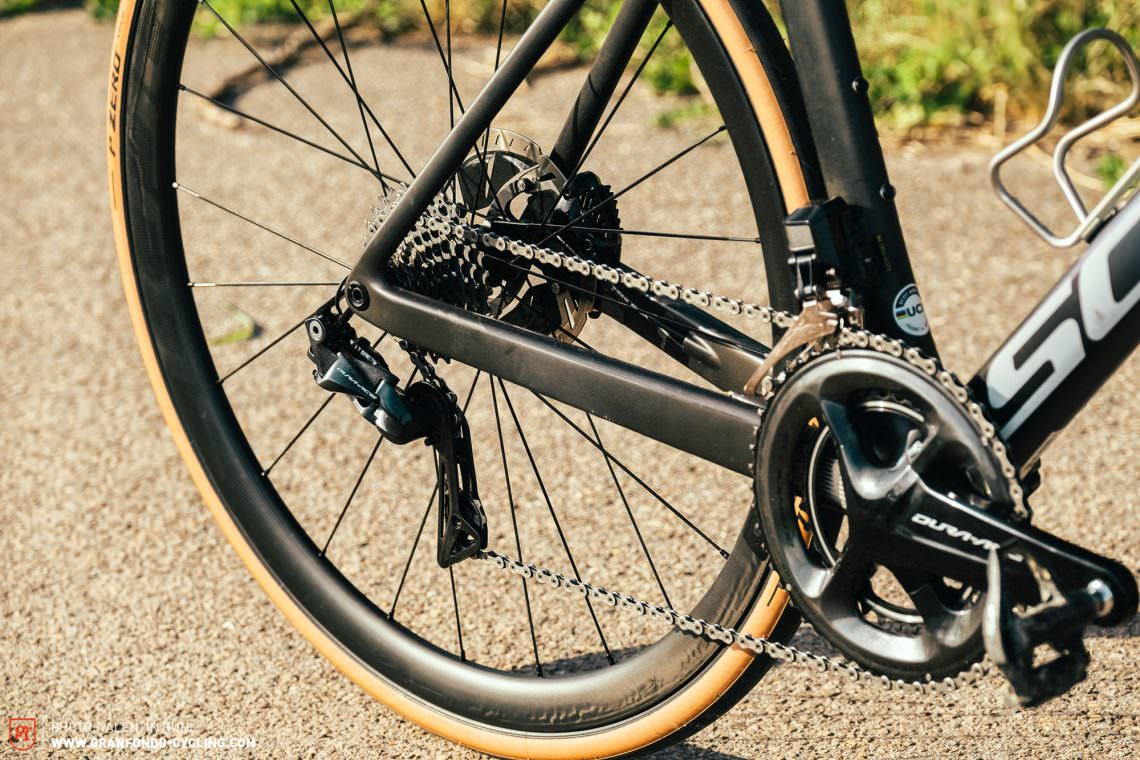
The Addict RC Pro is by far the cheapest bike in the test, nor is it SCOTT’s flagship race weapon. So while it’s understandable that this bike doesn’t come with a power meter, we would have been happy if it did!
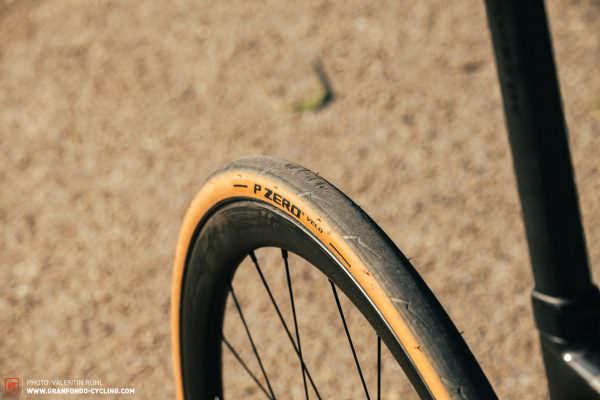
The Pirelli P ZERO 700 x 28C tires are a full 31 mm wide on the Syncros Capital 1.0 35 wheels of the SCOTT Addict RC Pro. This means that the bike has by far the widest tires in the test and would also be well-equipped for all-road use. However, what is good for comfort robs the bike of uncompromising racing speed.
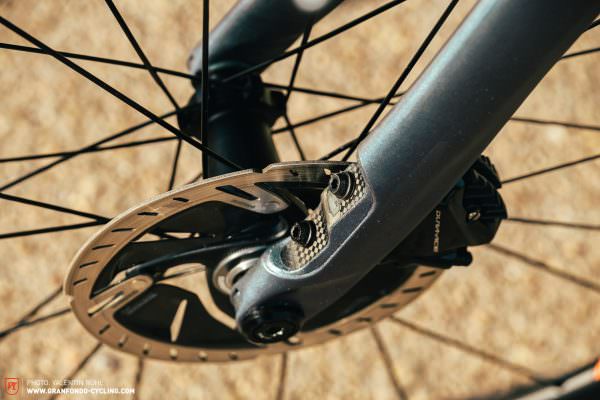
The front brake calliper of the Addict is attached via a direct-mount design when equipped with a 160 mm rotor. To hide the bolts at the front of the fork, they have been recessed and are concealed with a cover. Clean look, great aerodynamics.
SCOTT Addict RC Pro 2021
€ 8,499
Specifications
Seatpost Syncros Duncan SL Aero 20 mm
Brakes Shimano DURA-ACE BR-R9170 160/160 mm
Drivetrain Shimano DURA-ACE Di2 R9170 2 x 11
Chainring 52/36
Stem Syncros Creston iC SL 110 mm
Handlebar Syncros Creston iC SL 420 mm
Wheelset Syncros Capital 1.0 35
Tires Pirelli P ZERO Velo 31 mm
Technical Data
Size XXS XS S M L XL 2XL
Weight 6.99 kg
Specific Features
one-piece Creston iC SL carbon cockpit
direct-mount front calliper with cover
31 mm wide tires
sandwich dropouts
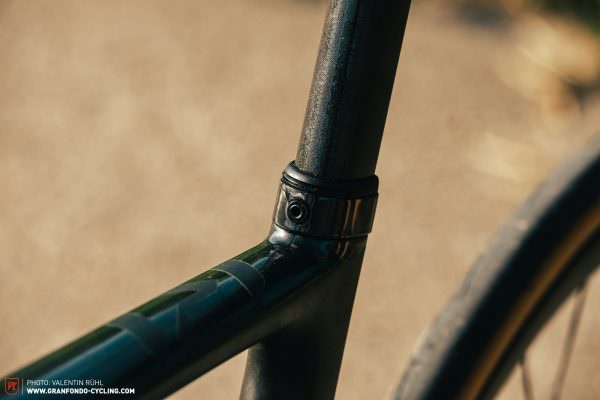
The seat post clamp is inconspicuous but easily accessible: very well solved!
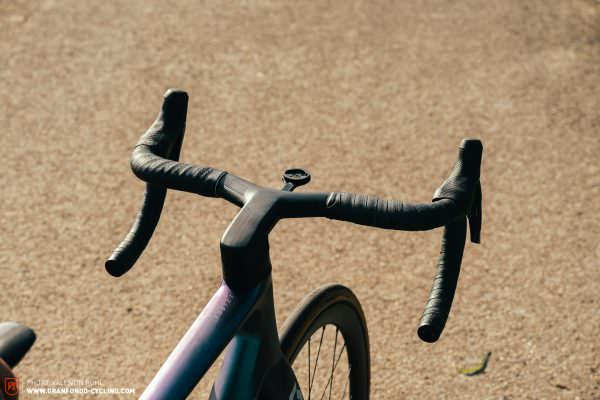
The one-piece Syncros Creston iC SL cockpit convinces with good ergonomics and, together with the tires, cushions the otherwise low inherent comfort of the frame.
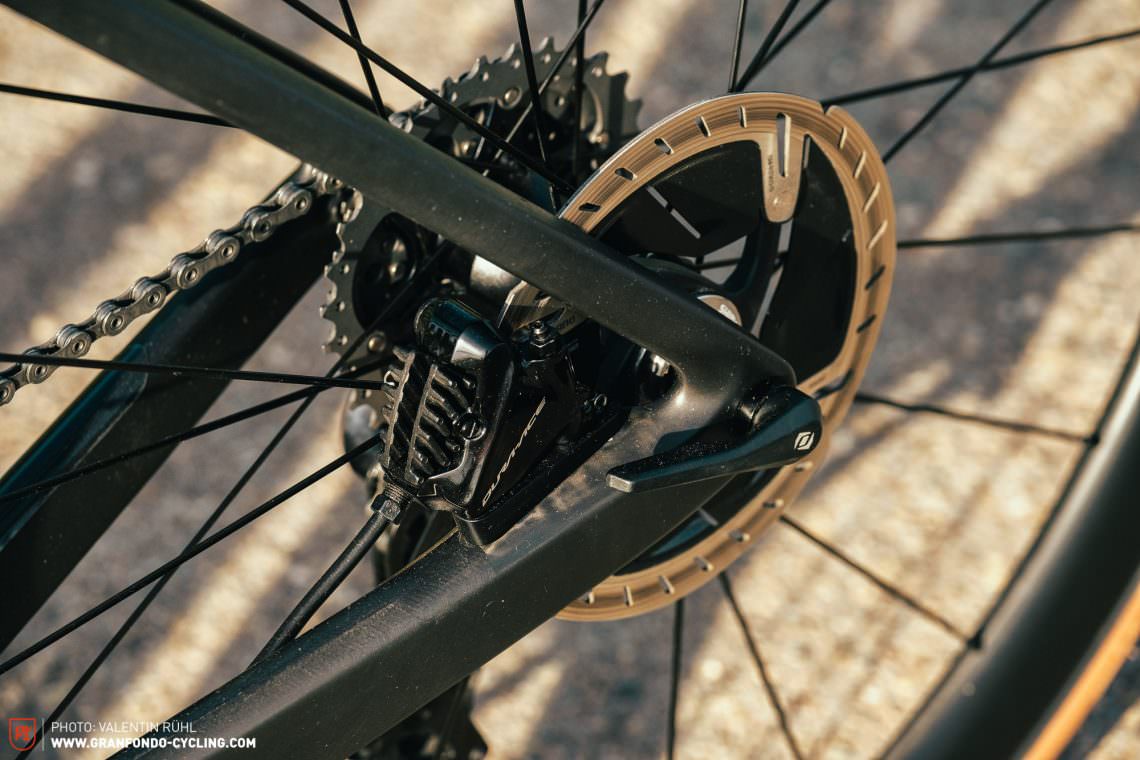
The dropouts of the SCOTT Addict RC Pro have a so-called sandwich construction. This means that the derailleur hanger isn’t bolted to the outside of the dropouts but is pushed into a recess.
The braking performance of the Shimano DURA-ACE is at the highest level, offering sufficient power and good modulation at all times. However, it doesn’t offer quite the same initial bite as the SRAM RED HRD brake system. The SCOTT Addict RC Pro also uses a one-piece aero cockpit, in the form of the in-house Syncros Creston iC SL unit. On our size L test bike, it comes with a stem length of 110 mm and a width of 420 mm. The Syncros Capital 1.0 35 wheels are 35 mm deep with a 21 mm internal width. The 700 x 28C Pirelli P ZERO Velo tires fitted to them measure a full 31 mm wide – by far the widest tires in the test. This is great for vibration damping and handling through corners but hurts the bike’s efficiency.
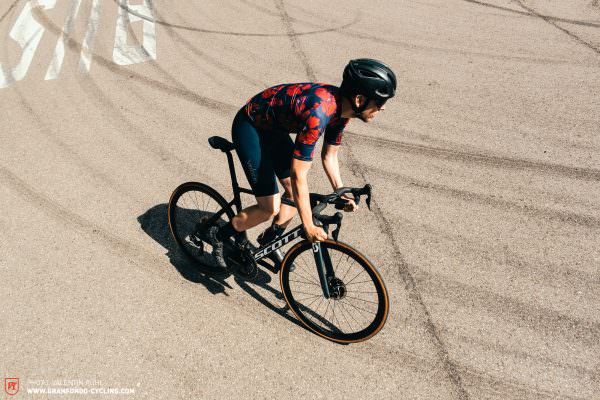
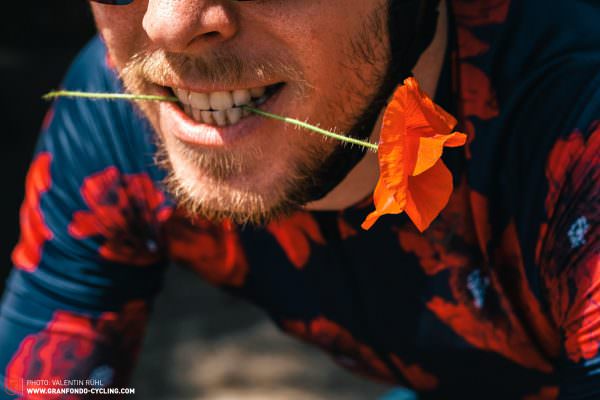
| Size | XXS | XS | S | M | L | XL | XXL |
|---|---|---|---|---|---|---|---|
| Seat tube | 410 mm | 430 mm | 460 mm | 480 mm | 500 mm | 520 mm | 550 mm |
| Top tube | 520 mm | 530 mm | 540 mm | 550 mm | 565 mm | 580 mm | 600 mm |
| Head tube | 97 mm | 102 mm | 115 mm | 135 mm | 155 mm | 175 mm | 193 mm |
| Head angle | 70.5° | 71.0° | 72.0° | 72.5° | 73.0° | 73.3° | 73.3° |
| Seat angle | 74.5° | 74.5° | 74.0° | 73.6° | 73.3° | 73.0° | 72.5° |
| Chainstays | 410 mm | 410 mm | 410 mm | 410 mm | 410 mm | 410 mm | 410 mm |
| BB Drop | 70 mm | 70 mm | 70 mm | 70 mm | 70 mm | 70 mm | 70 mm |
| Wheelbase | 988 mm | 994 mm | 991 mm | 992 mm | 1,000 mm | 1,008 mm | 1,023 mm |
| Reach | 380 mm | 388 mm | 389 mm | 390 mm | 395 mm | 400 mm | 410 mm |
| Stack | 504 mm | 511 mm | 527 mm | 548 mm | 569 mm | 588 mm | 606 mm |
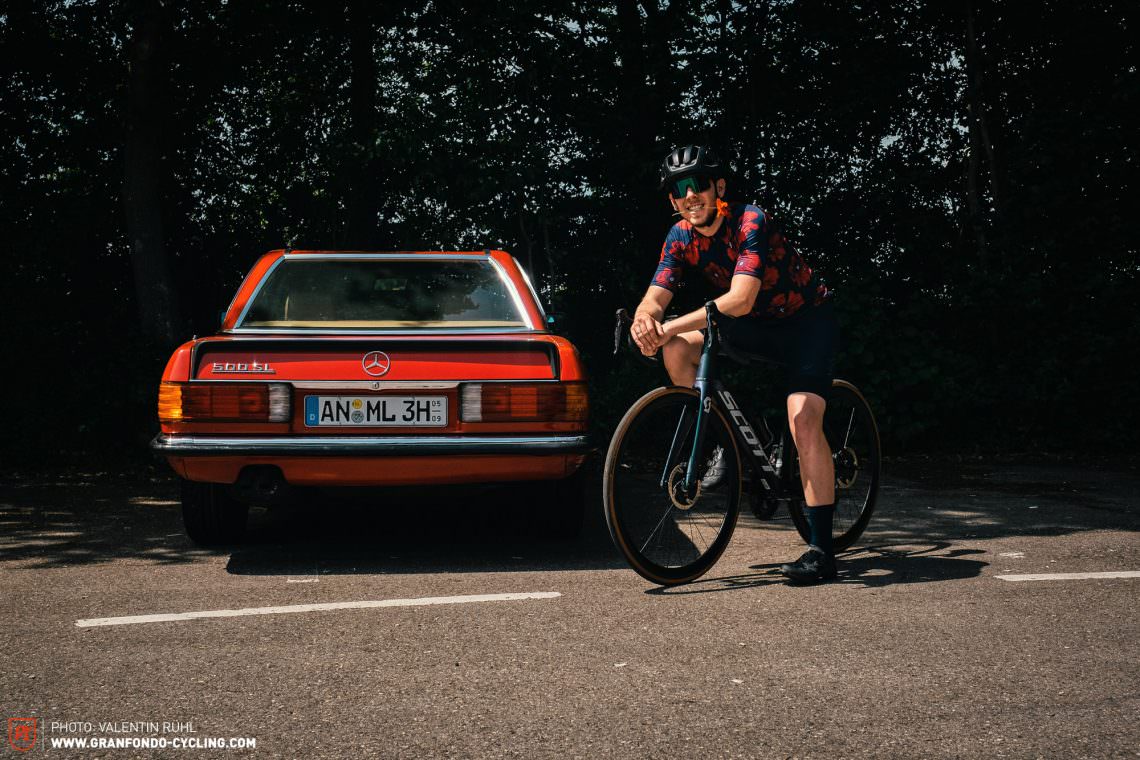
Pants Velocio CONCEPT Bib Short | Shoes Suplest EDGE+ Road Pro
Socks Velocio Signature Wool Sock
The fact that the SCOTT Addict RC Pro isn’t the sharpest racing whip in the SCOTT portfolio is noticeable in terms of speed. It doesn’t accelerate as effortlessly as the candidates from Trek, BMC and Wilier and is at the bottom of the test field in terms of efficiency. This is most likely due to the tires, which are very voluminous for a race bike. It might be nitpicking, but the SCOTT Addict RC Pro still loses valuable time to the competition on flat and undulating terrain. Despite its first-class uphill and downhill performance, it doesn’t have enough to deliver a best time. Nonetheless, although it’s the heaviest bike in the test field, it climbs the fastest.
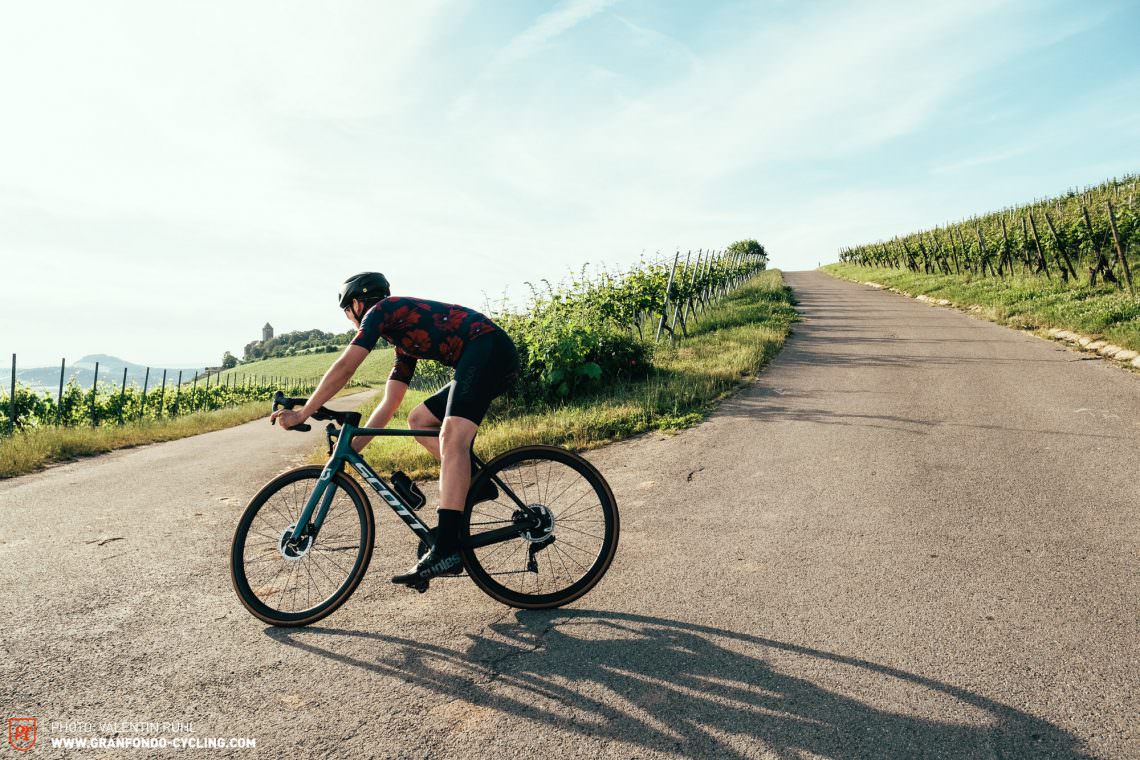
It also comes out on top on the downhills, together with the Wilier Filante SLR, which is mainly thanks to the excellent cornering characteristics of the wide Pirelli tires and highly precise handling. Overall, the bike covered our extrapolated 150 km test route with almost 2,000 m of climbing with an average speed of 25.9 km/h, taking 5 h 47 m 11 s to do so.
In terms of handling, the SCOTT Addict RC Pro is very balanced and, together with the Specialized S-Work Tarmac SL7, is at the top of the test field. It delivers a smooth ride and extreme precision but doesn’t steer quite as instantly as the competition from Trek, Wilier and BMC, likely due to the wide tires. Thankfully, this means that the SCOTT won’t overburden race bike newcomers. The bike’s good vibration damping is generated primarily by the voluminous tires as well as the cockpit and seat post. The frame itself is very stiff, as is typical for SCOTT. As a result, larger impacts that can’t be absorbed by the components become all the more noticeable. Particularly on rough surfaces with technical corners, good skills are required. However, on good surfaces, the comfort contributes just as much to the sense of security as the powerful brakes and balanced handling.


Tuning tips: If you are looking for a race bike suitable for everyday use, leave it exactly as it is. If you need more “race”, you should mount narrower tires (at the expense of comfort). | fit a power meter
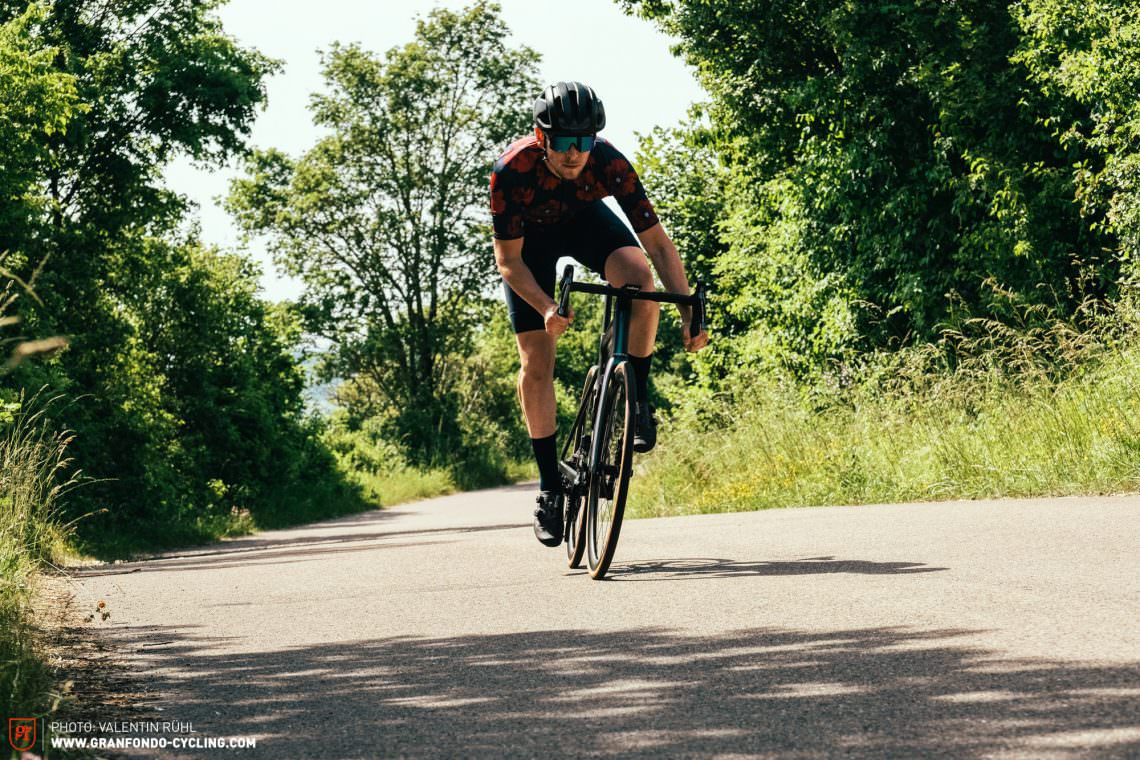
Riding Characteristics
4Agility
- cumbersome
- playful
Stability
- nervous
- confident
Handling
- demanding
- balanced
Fun factor
- boring
- lively
Comfort
- firm
- comfortable
Value for money
- terrible
- very good
Conclusion
The SCOTT Addict RC Pro is simply not focussed enough on all-out racing when it comes to the wheel-tire combination to win in this group test. But that’s not a bad thing: what the bike loses in acceleration and efficiency on the flat, it makes up for in cornering abilities, becoming king here. In addition, the good vibration damping makes it very well suited to a relaxed Sunday lap on perfect asphalt.
Tops
- excellent climbing performance, despite bulky tires and the highest weight in the test
- good vibration damping
- loves corners and carving thanks to the wide tires
- good combination of smoothness and directness
Flops
- low inherent comfort of the frame
- sacrifices pure race performance with large tires
- no power meter installed
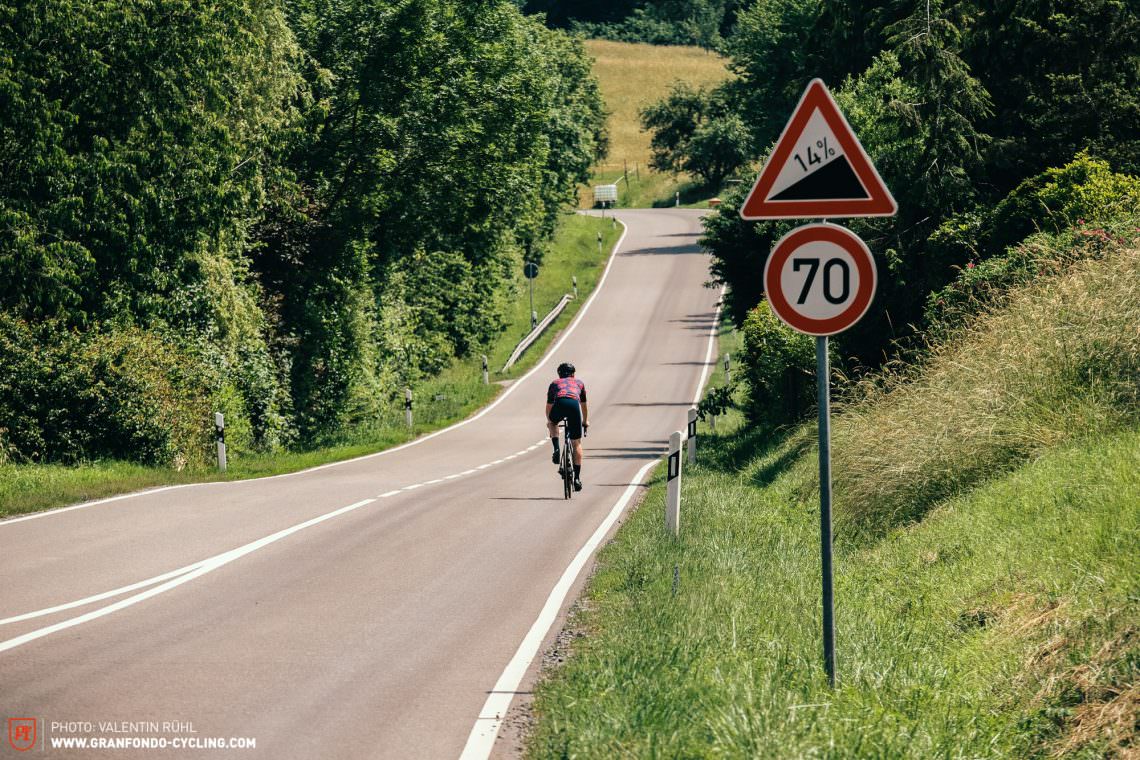
You can find out more about at scott-sports.com
The test field
Get an overview of the grouptest here: The best race bike of 2021 – 5 high-end models on test
All bikes in test: BMC Teammachine SLR01 ONE (Click for review) | SCOTT Addict RC Pro | Specialized S-Works Tarmac SL7 (Click for review) | Trek Émonda SLR 9 eTap (Click for review) | Wilier Filante SLR Astana-Premier Tech Team Edition (Click for review)
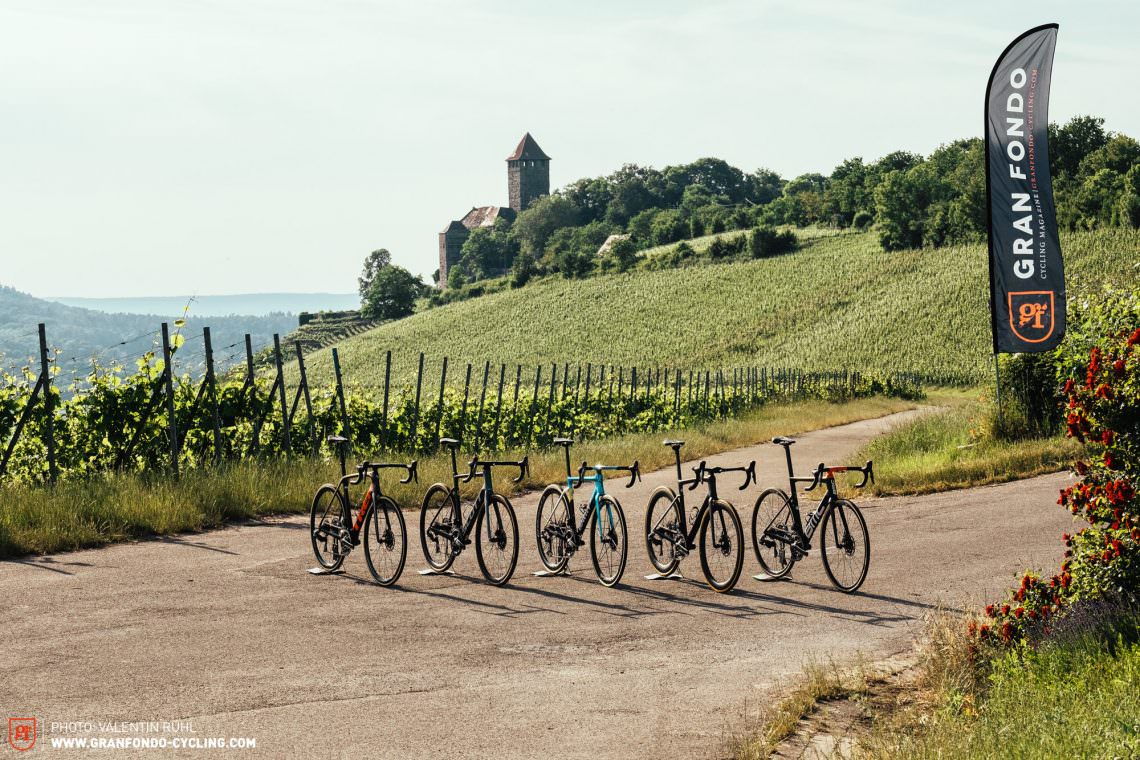
This is where you eat up the miles, setting a quick pace for a long time. Anything that is pan flat or includes short punchy climbs or slightly longer ones, albeit with limited elevation gain, falls into this category. If you want to be fast here, you need a bike that offers excellent aerodynamics and maximum efficiency – from 15 km/h on level ground, air resistance is the greatest force a cyclist needs to overcome. On the other hand, weight is comparatively insignificant, with no need to constantly change speed or fight earth’s gravity. However, the most aerodynamic package is no use if the rider ruins everything – after all, they are responsible for 75 % of the total drag on a bike. To blossom fully in this terrain, a bike needs to do well when it comes to ergonomics and comfort so that the rider can maintain a low and aerodynamic riding position for a long time. On top of aerodynamics, rolling resistance, comfort and smoothness play a key role. Thus, tire dimensions and pressure should be adjusted to suit the surface for maximum speed. A nervous bike will tire you out faster, because it requires constant work to hold your line.↩
The steeper the hill, the more significant weight becomes. That’s because as your speed drops on ever steeper climbs, air resistance decreases too, meaning that gravity becomes an ever-larger proportion of the force acting against your progress. Stiffness in the right places, together with a sensibly chosen gear ratio, ensure maximum climbing efficiency. A good climbing bike delivers low weight and gearing that lets you maintain a smooth and comfortable cadence. However, it also takes aerodynamics into account, given that there’s usually a descent after every mountain – what good is the best time on the mountain if your whole advantage is wiped out by poor aerodynamics on the downhill?↩
Descending a mountain quickly is possibly the most demanding task for both rider and bike. The steeper and more winding the descent, the greater the handling skills of the rider need to be and the larger the demands on the bike itself. A good downhill bike combines aerodynamics with balanced handling. It should be agile and yet offer sufficient security to master fast changes of direction and stay safely on track at high speeds. It needs to deliver the highest precision to hit your chosen line exactly and steer quickly without excessive input required. If you ride fast, you need good anchors too: powerful brakes that are easy to modulate are fundamental on every good downhill bike. To put that braking power on the ground, tires with good grip are needed and they’re just as indispensable for fast cornering. In addition to the tires, the frame itself helps generate grip through corners. If it’s stiff as a board, it can’t build up much grip before being shaken up by the smallest bumps. An appropriate amount of flex ensures optimum grip in bends, but it’s a narrow margin before the bike simply becomes spongy and imprecise.↩
You can find more info about our rating system in this article: Click here! ↩
Did you enjoy this article? If so, we would be stoked if you decide to support us with a monthly contribution. By becoming a supporter of GRAN FONDO, you will help secure a sustainable future for high-quality cycling journalism. Click here to learn more.
Words: Photos: Valentin Rühl


